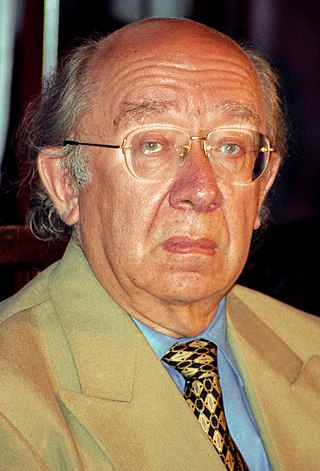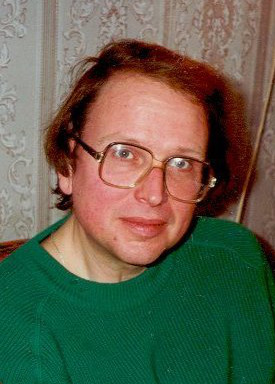Related Research Articles
Postmodern music is music in the art music tradition produced in the postmodern era. It also describes any music that follows aesthetical and philosophical trends of postmodernism. As an aesthetic movement it was formed partly in reaction to modernism but is not primarily defined as oppositional to modernist music. Postmodernists question the tight definitions and categories of academic disciplines, which they regard simply as the remnants of modernity.

A pastiche is a work of visual art, literature, theatre, music, or architecture that imitates the style or character of the work of one or more other artists. Unlike parody, pastiche pays homage to the work it imitates, rather than mocking it.
20th-century classical music is art music that was written between the years 1901 and 2000, inclusive. Musical style diverged during the 20th century as it never had previously, so this century was without a dominant style. Modernism, impressionism, and post-romanticism can all be traced to the decades before the turn of the 20th century, but can be included because they evolved beyond the musical boundaries of the 19th-century styles that were part of the earlier common practice period. Neoclassicism and expressionism came mostly after 1900. Minimalism started much later in the century and can be seen as a change from the modern to postmodern era, although some date postmodernism from as early as about 1930. Aleatory, atonality, serialism, musique concrète, and electronic music were all developed during the century. Jazz and ethnic folk music became important influences on many composers during this century.
Contemporary classical music is Western art music composed close to the present day. At the beginning of the 21st century, it commonly referred to the post-1945 modern forms of post-tonal music after the death of Anton Webern, and included serial music, electronic music, experimental music, and minimalist music. Newer forms of music include spectral music, and post-minimalism.

Sofia Asgatovna Gubaidulina is a Soviet-Russian composer and an established international figure. Major orchestras around the world have commissioned and performed her works. She is considered one of the foremost Russian composers of the second half of the 20th century along with Alfred Schnittke and Edison Denisov.

Alfred Garrievich Schnittke was a Russian composer. Among the most performed and recorded composers of late 20th-century classical music, he is described by musicologist Ivan Moody as a "composer who was concerned in his music to depict the moral and spiritual struggles of contemporary man in [...] depth and detail."

Naked City was an avant-garde music group led by saxophonist and composer John Zorn. Active primarily in New York City from 1988 to 1993, Naked City was initiated by Zorn as a "composition workshop" to test the limits of composition in a traditional rock band lineup. Their music incorporated elements of jazz, surf, progressive rock, classical, heavy metal, grindcore, country, punk rock, and other genres.

In music, modernism is an aesthetic stance underlying the period of change and development in musical language that occurred around the turn of the 20th century, a period of diverse reactions in challenging and reinterpreting older categories of music, innovations that led to new ways of organizing and approaching harmonic, melodic, sonic, and rhythmic aspects of music, and changes in aesthetic worldviews in close relation to the larger identifiable period of modernism in the arts of the time. The operative word most associated with it is "innovation". Its leading feature is a "linguistic plurality", which is to say that no one music genre ever assumed a dominant position.
Inherent within musical modernism is the conviction that music is not a static phenomenon defined by timeless truths and classical principles, but rather something which is intrinsically historical and developmental. While belief in musical progress or in the principle of innovation is not new or unique to modernism, such values are particularly important within modernist aesthetic stances.

Gennady Nikolayevich Rozhdestvensky, CBE was a Soviet and Russian conductor, pianist, composer and pedagogue.
Association for Contemporary Music (ACM) was an alternative organization of Russian composers interested in avant-garde music. It was founded by Nikolai Roslavets in 1923. ACM ran concert series and published magazines promoting the modernist music of Mahler, Schoenberg, Berg, Webern, Krenek, and Hindemith, as well as the work of its members. Its leading members were Dmitri Shostakovich, Nikolai Myaskovsky, Vissarion Shebalin, Alexander Mosolov, Gavriil Popov, and Vladimir Shcherbachev. The organization's enthusiasm for avant-garde Western music and for experimentation met with opposition from the Russian Association of Proletarian Musicians (RAPM), which by the late 1920s had eclipsed the ACM in terms of cultural influence. ASM was formally disbanded in 1931, whereas RAPM existed until 23 April 1932, when it was abolished by the Decree on the Reformation of Literary and Artistic Organizations.

The music of the Soviet Union varied in many genres and epochs. The majority of it was considered to be part of the Russian culture, but other national cultures from the Republics of the Soviet Union made significant contributions as well. The Soviet state supported musical institutions, but also carried out content censorship. According to Vladimir Lenin, "Every artist, everyone who considers himself an artist, has the right to create freely according to his ideal, independently of everything. However, we are communists and we must not stand with folded hands and let chaos develop as it pleases. We must systemically guide this process and form its result."
Lydia Anatolyevna Davydova was a Russian soprano, harpsichordist and a chamber music performer. As a singer her repertoire encompassed on one extreme the latest contemporary music, most particularly the music of Andrei Volkonsky, and on the other Renaissance and Early Baroque vocal music. Spending much of her life and career in Moscow, she was artistic director of the "Madrigal" early music ensemble and was decorated People's Artist of Russia (2001).

Alexander Shchetynsky (Shchetinsky) (Ukrainian: Олекса́ндр Степа́нович Щети́нський; Russian: Алекса́ндр Степа́нович Щети́нский; Aleksandr Stepanovich Shchetins'kiy) is a Ukrainian composer. Born on 22 June 1960 in Kharkiv, in the Ukrainian SSR of the Soviet Union. His work list includes compositions in various forms ranging from solo instrumental to orchestral, choral pieces and operas.
Peter Dickinson was an English composer, musicologist, author, and pianist.
Valery Popov is a Russian bassoonist, described as the foremost of his era in Russia in his Grove Music Online entry.
Russian composer Alfred Schnittke wrote his Symphony No. 2, subtitled "St. Florian" and "Invisible Mass" in 1979. It is a choral symphony, written for contralto, countertenor, tenor and bass, plus chorus and orchestra. The symphony was written in homage to 19th century Austrian composer and organist Anton Bruckner, who was closely associated with St. Florian's Priory in the town of Sankt Florian, Upper Austria, and who is buried under the organ there.

Alexander Ivashkin, was a Russian cellist, writer, academic and conductor. He was a professor of music and the Chair of Performance Studies at Goldsmiths, University of London since 1999, the director of the Centre for Russian Music, and the curator of the Alfred Schnittke Archive. In 1996, he published the first English-language biography of the composer Alfred Schnittke.

November Music is an annual international festival of contemporary music in the Netherlands on various locations in 's-Hertogenbosch. Its motto is 'Today's Music by Today's Makers'.
References
- ↑ John Webb, "Schnittke in Context" Tempo New Series/182, September 1992. 19–22. Citation on 19.
- ↑ Ivan Moody, "The Music of Alfred Schnittke", Tempo New Series, no. 168, 50th Anniversary 1939–1989 (March 1989): 4–11. Citation on 4.
- ↑ Ted Gordon, "John Zorn: Autonomy and the Avant-Garde" Avant vol. 3/T, 2012. 329–343. citation on 331.
- ↑ Nachum Schoffman, "Charles Ives's Song 'Vote for Names'", Current Musicology 23 (1977): 56–68.
- ↑ Daniel Albright, "Postmodern Interpretations of Satie's Parade", Canadian University Music Review/Revue de Musique des Universités Canadiennes 22, no. 1 (2002): 22–39.
- ↑ Rudolph von Abele, "Film as Interpretation: A Case Study of Ulysses", The Journal of Aesthetics and Art Criticism 31 (1973): 487–500, citation on 495.
- ↑ Vera Lukomsky, "Sofia Gubaidulina: 'My Desire Is Always to Rebel, to Swim against the Stream!'”. Perspectives of New Music 36. no. 1 (Winter 1998): 5–41, citation on 24–26.
- 1 2 Alfred Schnittke, "Polystylistic Tendencies in Modern Music (1971)", in A Schnittke Reader, edited by Aleksandr Ivashkin, English translation by John Derek Goodliffe, 87–90 (Bloomington: Indiana University Press, 2002) ISBN 978-0-253-33818-1.